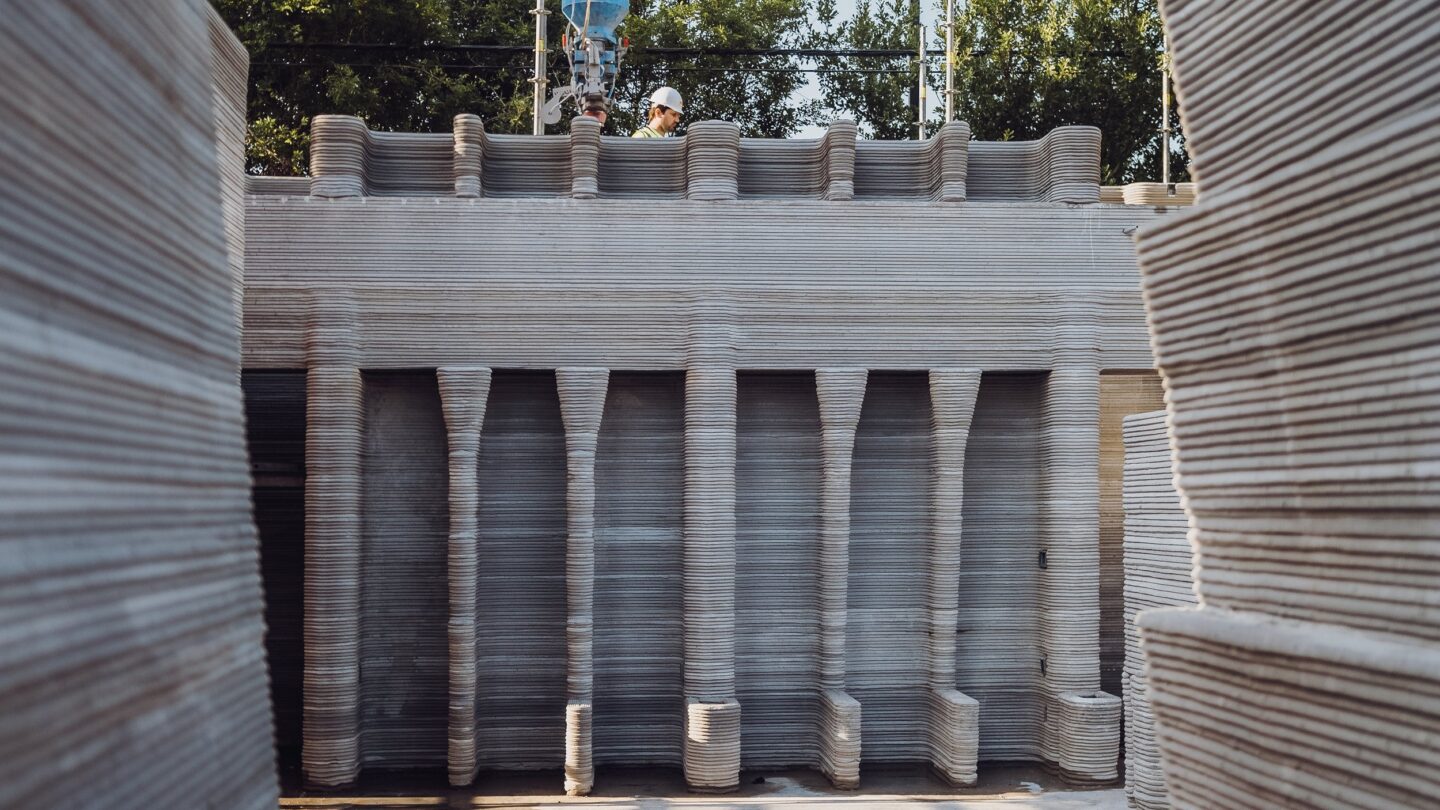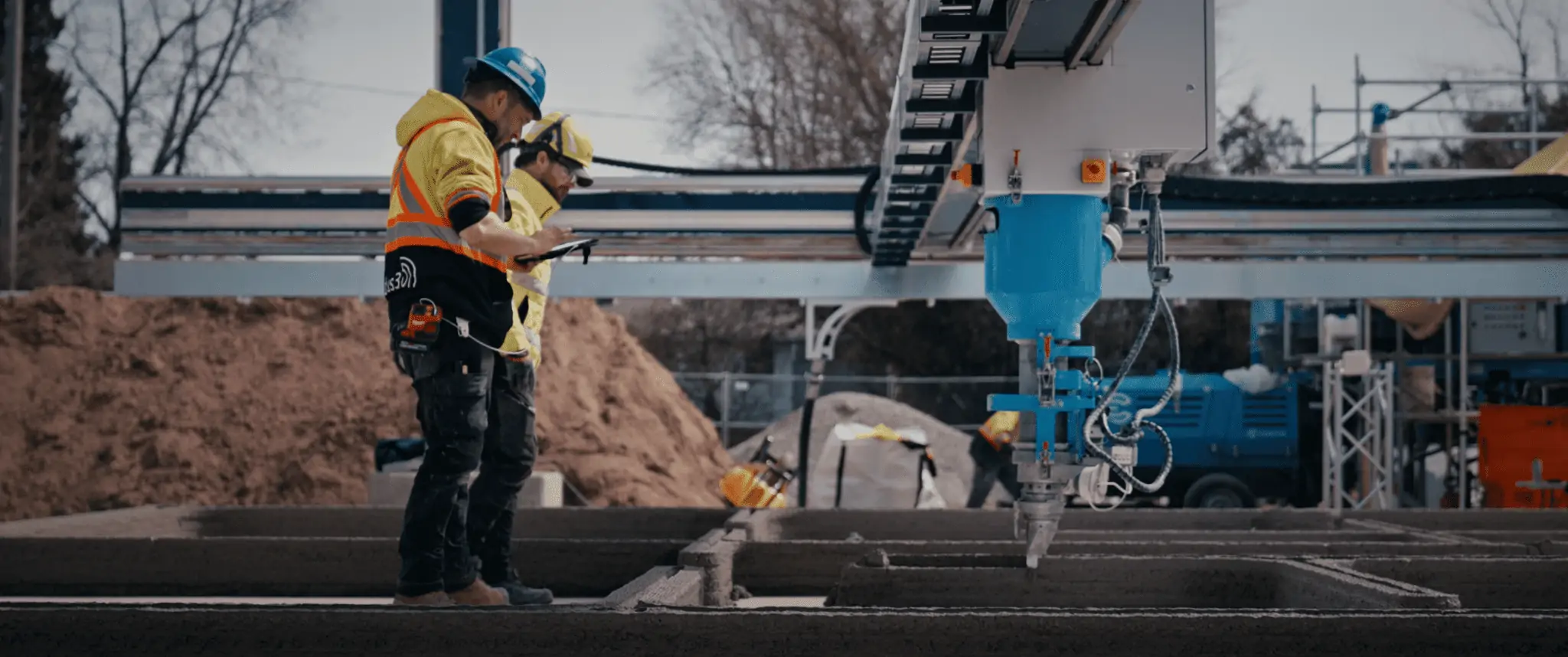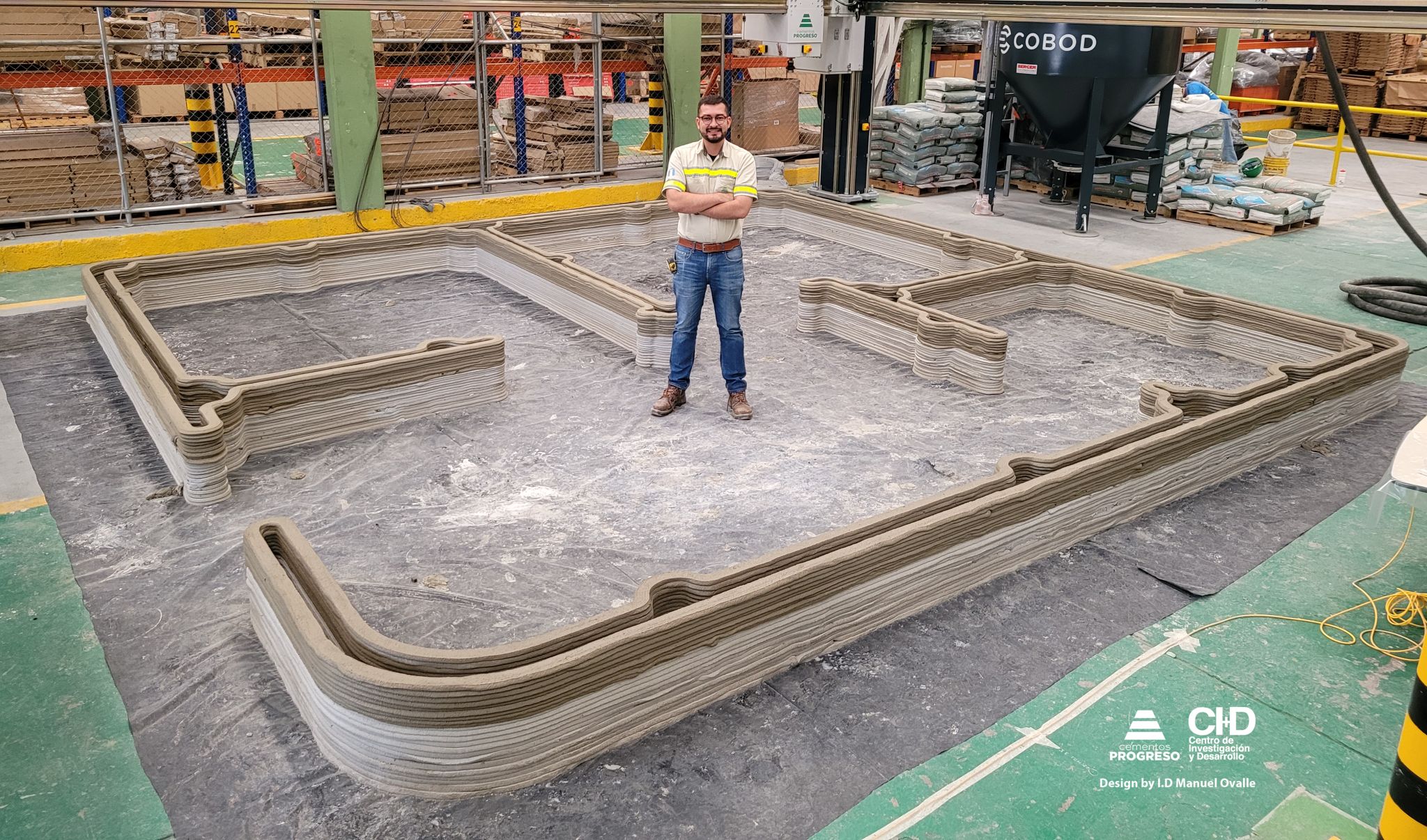Following a rush of investments from PERI Group, G.E. Renewable Energy, and Cemex Ventures, COBOD is lining up projects to set the tone for the future of 3D printing. In North America, hardware by the Danish concrete 3D printer manufacturer is being used to build a 4,000-square-foot house and a two-story building. At the same time, Central America will see the installation of the first COBOD 3D construction printer in Guatemala to help solve the massive housing deficit in the region.
 Houston, Texas 3D printed house. Image courtesy Anthony Vu/COBOD.
Houston, Texas 3D printed house. Image courtesy Anthony Vu/COBOD.In Houston, Texas, German construction company PERI Group, local construction firm CIVE, and HANNAH architects are building a two-story building that also doubles as the largest 3D printed residential construction so far in the U.S. Relying on COBOD’s BOD2 3D construction printer for the 4,000-square foot project; the team managed to combine concrete 3D printing with wood framing. This hybrid construction approach allows the two material systems to be used strategically and aims to increase the applicability of 3D printing in the U.S., where framing is one of the most common construction techniques.
According to the company, the building design is conceptualized as a series of printed cores that contain functional spaces and stairs. The spatial cores are connected by wood framing to produce an architectural alternation of concrete and framed interiors. Moreover, the project’s scalable design and construction process serve multifamily housing and mixed-use construction.
Described by HANNAH co-founders Leslie Lok and Sasa Zivkovic as a “building system that is structurally efficient, easily replicable, and materially responsive,” this project is the largest printed with BOD2 3D printers so far.
Fabian Meyer-Broetz, CEO of PERI 3D Construction, said, “We are convinced that it will set new standards from a design as well as printing execution perspective and underlines our role as the forerunner for this new construction technique.”
Home to an increasing number of 3D printed structures, Texas has seen its fair share of firsts in 3D construction in recent years. In 2021, Dallas startup Von Perry began 3D printing the structure of custom homes in North Texas using hardware from Minnesota-based Total Kustom. Now that its first proof-of-concept is almost complete, it is preparing to kick off its $2 million fundraising effort on the crowdfunding platform StartEngine. In addition, in October of 2021, Texas 3D printing construction firm ICON announced it was building the largest community of 3D printed homes in Austin after listing its first 3D printed homes on the U.S. domestic housing market earlier that year.
BOD2: A star is born
A second 3D construction project in North America is heralded by local construction company nidus3D and is among the region’s first multi-story 3D printed buildings. Built in Ontario, the 2,300-square feet building also employed the BOD2 printer from COBOD and a low-cost, locally sourced material solution called D.Fab, developed in collaboration with Cemex.
Complete with a studio on the first floor and a residential area above, the construction has a 3D printed horizontal beam printed on-site and lifted by a crane. It was built in only 80 hours, down from the 200 hours it took nidus3D to erect its first building. The short building time frame and the low-cost materials employed to build the structure could eventually address the housing gap in Canada. In fact, the 3D printed homes are expected to be available by the Summer of 2022 for individuals and couples seeking attainable housing.
 nidus3D used COBOD technology for their first 3D printed multi-unit residential building. Image courtesy of COBOD.
nidus3D used COBOD technology for their first 3D printed multi-unit residential building. Image courtesy of COBOD.The Canada Mortgage and Housing Corporation (CMHC) has determined that the country will need over 22 million housing units to achieve housing affordability for every Canadian by 2030. COBOD and nidus3D believe this new building method will be a game changer for the housing crisis.
“We have a critical shortfall of skilled laborers and a massive and growing demand for housing all across Canada,” suggested nidus3D co-founder Ian Arthur. “So, if we do not begin to look at new ways of building, we’re never going to catch up. It is part of our core values to seek solutions to address the housing crisis and to help build affordable housing with the help of 3D printing.”
LatAm’s housing crisis gets attention from COBOD.
Latin America has been suffering from a housing crisis since the 1940s. Lack of appropriate housing is a prominent issue in developing countries, and Central and South America have seen its share of housing troubles. Roughly 117 million people in Latin America live in slums, so historically. Unfortunately, housing policy in the region hasn’t been an enormous success. Perhaps 3D printing can have a central role as part of the solution. That’s what Cementos Progreso is envisioning. As Guatemala’s largest cement company, Cementos is now spearheading the use of COBOD’s 3D construction printers in Latin America to solve the housing deficit.
 Cementos Progreso 3D printed projects using COBOD printer. Image courtesy of Manuel Ovalle/Cementos Progreso via LinkedIn.
Cementos Progreso 3D printed projects using COBOD printer. Image courtesy of Manuel Ovalle/Cementos Progreso via LinkedIn.Latin America has been lagging in using 3D construction printing technology to try to solve the massive housing deficit in the region. Now Cementos Progreso has confirmed its commitment to 3D construction with the official inauguration of the new Center for Innovation and Development in Guatemala aimed at developing the construction printing industry in the region. Additionally, the company installed Guatemala’s first COBOD 3D construction printer, a BOD2, at the R&D site, paving the way for applying new construction technology in the region. For months, the R&D team at Cementos Progreso has been working with 3D modeling for urban and habitable projects they plan to manufacture with the 3D construction printer from COBOD.
For example, industrial designer Manuel Ovalle is currently at the Cementos Progreso R&D site and has detailed part of his work on social media: “I implement design as a vital tool to test the physical and mechanical on-site properties of the 3D printable material with the printed pieces, aiming to develop locally available high-quality digital manufacturable concrete with a complete characterization. I’ve also been ideating printable elements that could transform the cities into more human-friendly and sustainable systems.”
 Manuel Ovalle at the Research & Development Center of Cementos Progreso in Guatemala. Image courtesy of Manuel Ovalle/Cementos Progreso via LinkedIn.
Manuel Ovalle at the Research & Development Center of Cementos Progreso in Guatemala. Image courtesy of Manuel Ovalle/Cementos Progreso via LinkedIn.With so many announcements in just one week, it is clear that COBOD is gaining ground in the growing 3D printing construction market, projected to reach more than $4 billion by 2030. Although the company does not disclose revenue in its annual accounts, it revealed its gross profit had increased from Danish Krone (DKK) 4.9 million (roughly $660,000) to DKK 9.3 million ($1.3 million) between 2019 and 2020. The accounts also show that the company’s order intake for the first few months of 2021 exceeded the total order intake for 2020. COBOD printers are changing the way housing structures are built and paving the road for more affordable housing everywhere, mainly due to the technologies inherent in faster building capability.
Subscribe to Our Email Newsletter
Stay up-to-date on all the latest news from the 3D printing industry and receive information and offers from third party vendors.
You May Also Like
3D Printing Financials: Fathom Struggles in Financial Quicksand During Critical Transition
Facing a year of key transitions and financial pressures, Fathom (Nasdaq: FTHM) has filed its annual report for 2023 with the U.S. Securities and Exchange Commission (SEC). The document outlines...
Latest Earnings Overview for Australian 3D Printing Firms Titomic and AML3D
Australian 3D printing manufacturing firms Titomic (ASX: TTT) and AML3D (ASX: AL3) reported their financial results for the period from July to December 2023, marking the first half of their...
3D Printing Webinar and Event Roundup: April 7, 2024
Webinars and events in the 3D printing industry are picking back up this week! Sea-Air-Space is coming to Maryland, and SAE International is sponsoring a 3D Systems webinar about 3D...
3D Printing Financials: Unpacking Farsoon and BLT’s 2023 Performance
In the Chinese 3D printing industry, two companies, Farsoon (SHA: 688433) and Bright Laser Technologies, or BLT (SHA: 688333), have recently unveiled their full-year earnings for 2023. Farsoon reported increases...































